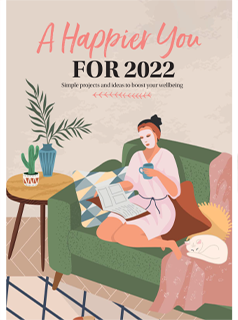According to a recent survey, 90 per cent of us suffer from posture-related aches and pains. So how can you shake off your slump and bring your body back into alignment? Lucy Dimbylow investigates
According to a recent survey, 90 percent of us suffer from posture-related aches and pains. So how can you shake off your slump and bring your body back into alignment? Lucy Dimbylow investigates posture-related aches and pains , and modern living is largely to blame.
Even if you’re not chained to a desk, chances are your posture is less than perfect. Carrying a child on one hip, carting your life around in your handbag, and even wearing the wrong size bra can all affect the way you carry yourself. So, too, can your footwear – and skyscraper heels aren’t the only culprits.
“Women often think flats are better for their backs than high heels, but flip flops and Ugg-type boots can be just as bad,” says Sammy.
One in three people suffers back and neck pain on a daily basis, but poor posture can also cause many less obvious symptoms, including headaches, joint pain and weakness, lethargy, breathlessness and anxiety. “It can even affect your digestive system, which is effectively squashed if you’re not sitting or standing straight,” Sammy adds. Your confidence can also suffer, with 42 per cent of people so self-conscious that they’ll only undress in the dark, according to MBT’s research.
Nevertheless, many of us bury our heads in the sand. “Most people don’t seek help until they’re experiencing pain,” explains chiropractor Tim Hutchful. “But poor posture has a cumulative effect. Even if you’re not aware of a problem now, you could be storing up trouble for 10 years’ time – and the last straw could be something as simple as bending over to tie your shoelaces.”
The good news is that it’s never too late to correct your posture. So how can you shake off your slump and rediscover the art of walking tall?
Chiropractic
Chiropractic is a hands-on therapy that concentrates on improving the function of the joints, particularly the spine, and is especially good for back pain. “If you have good posture, your spine is working at its most efficient, making your body stronger,” explains Tim Hutchful.
Chiropractors make manual adjustments to the joints, restoring optimal function, improving the efficiency of the nervous system and promoting your body’s natural healing ability. “But just as important as the active stretching and strengthening is the ergonomic advice,” explains Tim. “It’s not just about treating the problem, but identifying what caused it in the first place and changing that behaviour.”
To find a chiropractor or watch Straighten up UK, a three-minute daily exercise programme to improve posture, visit chiropractic-uk.co.uk.
Osteopathy
A holistic approach involving the entire musculoskeletal system, osteopathy asserts that for your body to work well, its structure must function well. “If one area isn’t working properly, it puts strain on other areas, causing problems such as muscle pain and tension,” explains Lucy Ross-Browne of the British Osteopathic Association (osteopathy.org ). “If every part of the body is doing its bit and working towards symmetry, we can improve posture and avoid adverse strain.”
Using physical manipulation, massage, stretching and breathing exercises, osteopaths aim to improve posture and relieve pain by getting your skeleton, muscles, ligaments and connective tissue working together. These techniques also boost blood supply to your muscles.
Zero balancing
A relatively new therapy, dating back to the 1970s, zero balancing works on the premise that both the body’s energy and structure are responsible for good health. Therapists use finger pressure focused on the bones and joints to create periods of stillness that allow the body to relax and reorganise itself.
“To cope with the stress that goes through the body, our bones need to be strong and our muscles relaxed,” says therapist Sue Johns (zerobalancinguk.org ).
“We work particularly on the sacroiliac joint, ribs, vertebrae and the tarsals in the feet – the main load-bearing joints – and lift into them, using the body’s own weight. By holding the joints in those positions and giving the body a chance to absorb the work, we can realign the body and bring about a deep sense of relaxation.”
Alexander technique
The Alexander technique is often hailed as the gold standard in improving posture, with recent research showing that it’s more effective than conventional medicine in relieving back pain. “It re-educates people about the way they use their bodies, changing bad habits,” explains Shelagh Aitken of The Society of Teachers of the Alexander Technique (stat.org.uk ). “Rather than manipulation, we use guided movements that help people learn new ways of using their bodies.”
The technique, best learnt one-to-one, helps you to combat stiffness and strain and move with minimum effort. “One good exercise is to lie on your back with books under your head, which lets the spine lengthen and release stress,” says Shelagh. “It also gives you an opportunity for physical relaxation, and time to think about how your daily life affects your body.”
Yoga With our sedentary lifestyles to blame for poor posture, it’s important to make time for exercise, and yoga is particularly effective . “It helps by strengthening, elongating, aligning and relaxing the whole body,” says yoga teacher Jo Prakash (josyoga.com ).
Practising yoga regularly makes you more aware of how you carry yourself, but the first step to good posture is to master tadasana, or the mountain posture. “Your feet should be together, with your toes in line and your weight evenly on both feet,” says Jo. “Then lift the knees up, tuck your tailbone under, engage your pelvic floor, and hold your stomach muscles in.” This spreads the weight evenly throughout your body, rather than letting your feet and lower back take all the strain.
“At the same time, lift your ribcage up and hold your shoulders back, but relaxed,” says Jo. “Bring your chin slightly towards your chest to elongate the spinal cord – imagine you have a string pulling you taller from the crown of your head.” Finally, breathe through your nostrils – in for a count of four, and out for eight.
“If you can hold this posture throughout the day, it will make you look taller and slimmer, and feel stronger and more confident,” adds Jo.
Self-help
While therapies can correct your alignment, the key to maintaining good posture is to make small but significant changes to your lifestyle, such as swapping from a heavy shoulder bag to one with a cross-body strap, being properly fitted for a supportive bra and rethinking your footwear. “Alternate your shoes so you don’t wear the same heel height every day, and, if you’re partial to high heels, do some core stability exercises like pilates to compensate,” suggests Sammy Margo.
Raising your awareness of your posture also helps. “Try pulling your abdominal muscles in all the way, releasing by 50 per cent and holding them in that position all day to improve your posture,” suggests Sammy. “Or imagine there’s a wall behind you, making you stand straighter.” To make sure you’re on the right lines, many physiotherapy practices offer free posture clinics, or check out Posture Perfect, a DVD combining physio and pilates exercises (physiophysio.com ).
Correcting poor posture isn’t an overnight phenomenon; after all, it takes years to develop the bad habits that can lead to problems. But with some small changes and increased awareness of the way you carry yourself, you can bring your body back into alignment – and find yourself literally walking taller.
Bowen technique
If you’re suffering from posture-related pain, the thought of trying a hands-on manipulative therapy may be daunting, but the Bowen technique offers an altogether gentler experience. “Whereas chiropractic and osteopathy work on adjusting hard tissue, Bowen theory works on the soft connective tissue that holds hard tissue in place,” says Julian Baker, principal instructor with the European College of Bowen Studies (thebowentechnique.com ). “By using gentle rolling movements interspersed with breaks to allow the tissues to relax, we can improve flexibility and posture without causing pain.”
Research backs up the theory, showing that after just one treatment, flexibility continues to improve for up to a week. “It’s particularly good for recent pain, because it works very quickly,” says Julian. “But even people who’ve suffered for years often see results after just two or three sessions.”
Pilates
Pilates is another exercise that can help improve your posture. “It increases your awareness of how your body is aligned, and allows the spine to move in all four directions – forwards, backwards, sideways and in rotation,” says Alicia Moran, spokesperson for the Pilates Foundation (pilatesfoundation.com ). “It activates muscles that are underused in our daily life.”
This helps reduce the strain on the body. “If your body is correctly aligned, the muscles needn’t work so hard,” says Alicia. “Pilates also improves the strength and stability of your core muscles, which are essential for good posture. Over time, your body subconsciously takes on the lessons learned in class, so you naturally develop better posture.”
Physiological footwear
No time for yoga classes or chiropractic treatments? Physiological footwear such as MBT (uk.mbt.com ) or Earth (lovethoseshoes.com ) can instantly improve your posture, according to research.
“The curved sole of MBT footwear means that your whole body is slightly destabilised, so you have to realign your spine in order to maintain your centre of gravity,” explains Joshua Wies, a chartered physiotherapist and director of the MBT Academy. He adds: “This stimulates your natural reflex to stand up straighter.”
Indeed, studies have shown that wearing MBTs instantly makes you stand straighter by 10 degrees, which has positive implications for conditions such as back pain. “It triggers small changes throughout your whole body, from the ankles and knees to the hips and pelvis – and it burns more calories too,” adds Joshua.























